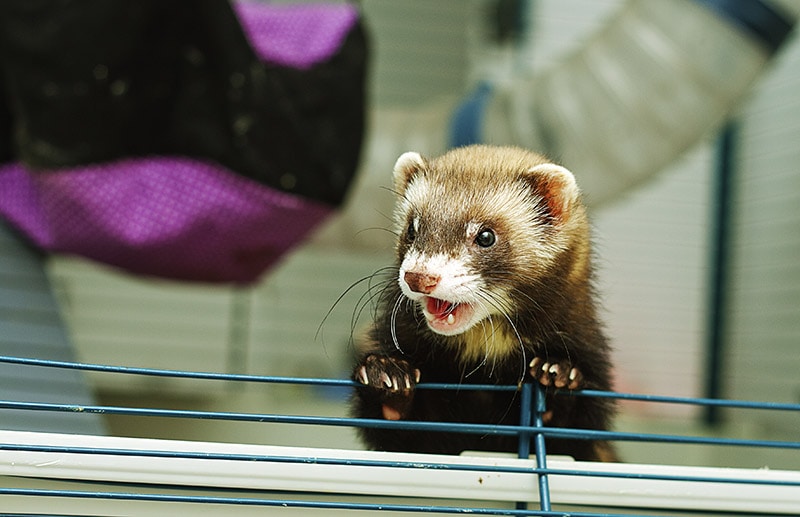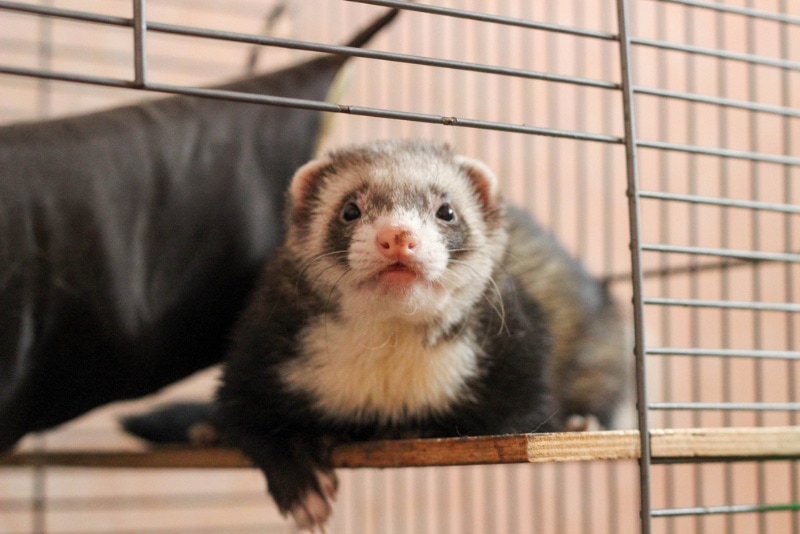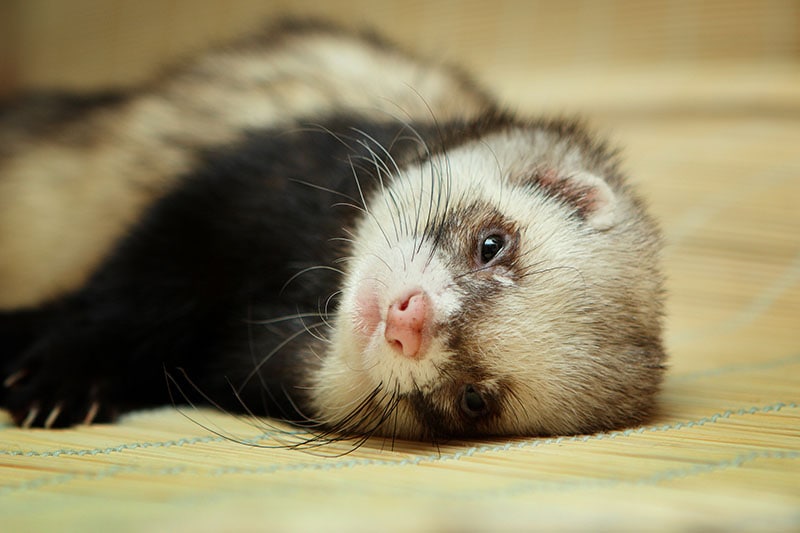Weasel vs Ferret: The Key Differences (With Pictures)
By Ashley Bates
Updated on
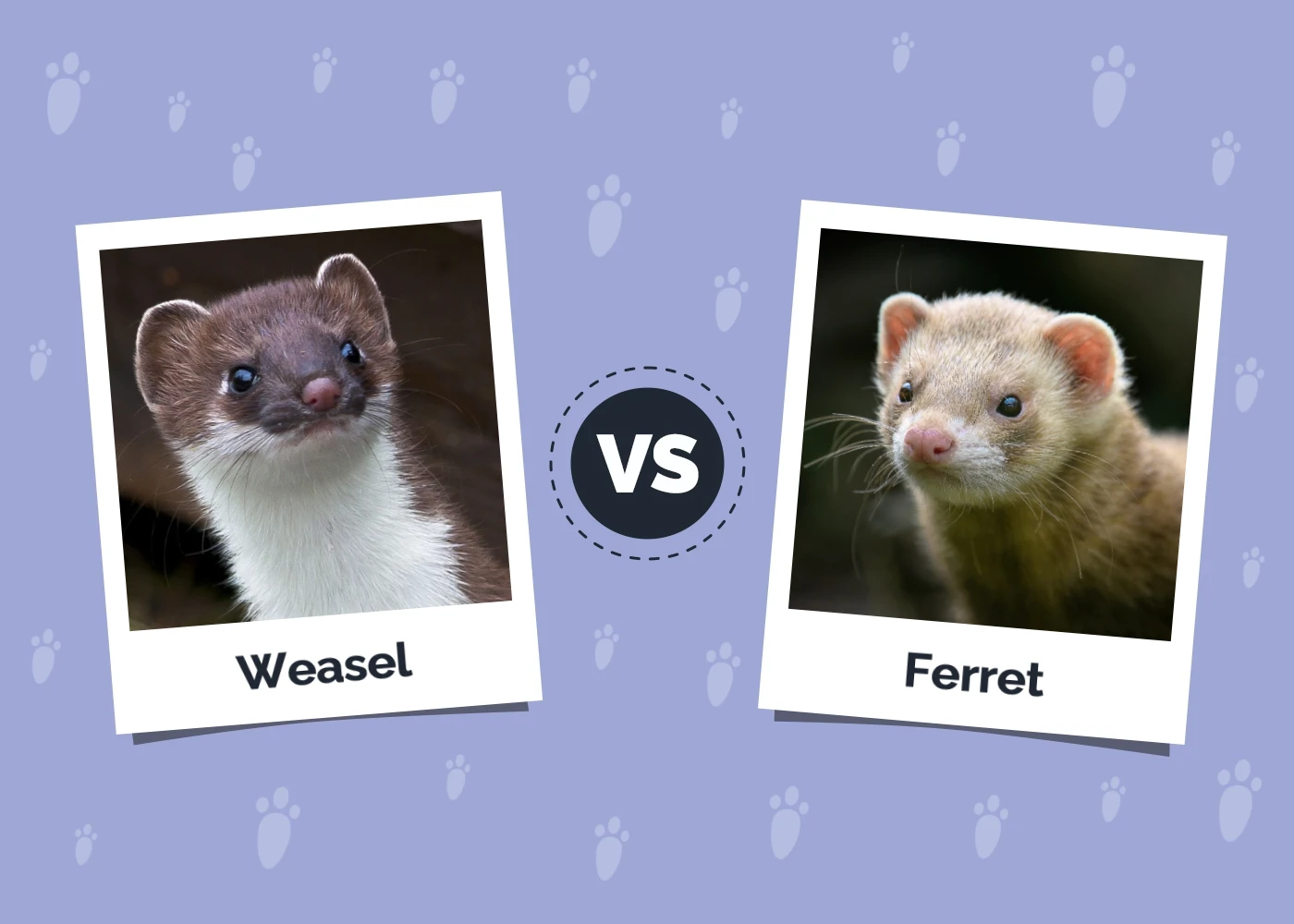
Click to Skip Ahead
At first glance, can you tell a weasel and ferret apart? To the naked eye, this might be pretty difficult. However, there are some notable physical and social differences between the two. So, what are these differences? Can you own both a weasel and ferret? Do these creatures behave the same? Do they differ with social structure, diet, or breeding?
We have answers to all these questions and more. Let’s explore these closely related cousins.
Visual Differences
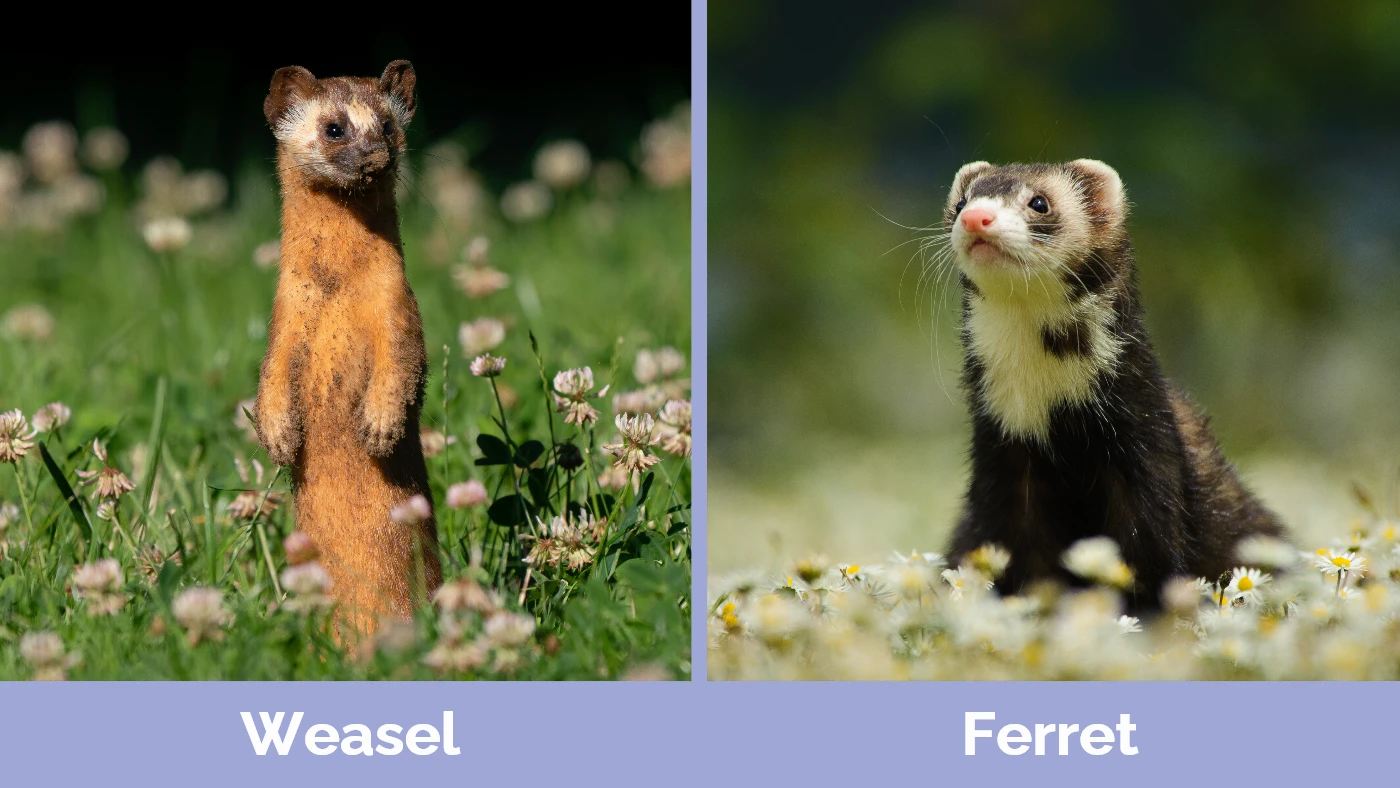
At a Glance
- Average length (adult): 7–14 inches
- Average weight (adult): 2–7 ounces
- Lifespan: 10–12 years
- Legal to own?: Permit only
- Average length (adult): 21–26 inches
- Average weight (adult): 55–80 pounds
- Lifespan: 10–13 years
- Legal to own?: Often legal, some require permit
Weasel Overview

Origin
The weasel is a well-known vicious carnivore found on every continent except Australia and Antarctica. These small critters are swift, agile hunters with keen awareness.
In addition to their natural habitats, they have been relocated to secluded countries like New Zealand to decrease the rodent population. Of course, introducing an invasive species can also have negative impacts.
Ten species classified in the genus Mustela have “weasel” in the title. However, these creatures are closely related to other similar animals such as the ermine, polecat, ferret, and European mink.
Temperament
Weasels are vicious predators that prefer to live alone. They rarely ever come together except for breeding. They might also be incredibly territorial with one another. Weasels also hold no prisoners. If the weasel locates prey, they will be swiftly killed and eaten.
You will be impressed with a weasel’s keen intelligence and entertaining activity in a domestic setting. However, they should be under human care only when necessary to ensure the animal’s longevity. These curious little creatures will want to know about your business, getting into all sorts of shenanigans with you.
Diet
Weasels are strictly carnivorous. They consume 40% or more of their body weight daily by eating approximately four mice per day. If mice are unavailable, weasels are opportunistic eaters and will settle for other rodents and small prey.

Physical Characteristics
Weasels are generally small animals that walk closely to the ground, with long, slender bodies, long tails, rounded ears, short legs, and potent scent glands. If they get irritated, they discharge an odor that can be highly unpleasant to encounter.
As adults, weasels get to be roughly 15 to 24 inches long, which includes their tail. Adults weigh between 3 and 9 ounces, with females being nearly half the size of males.
Domestic Possibilities
Certain areas allow you to have weasels as pets. These adorable and active creatures will certainly keep you on your toes. You might have an upper hand if you are an experienced person with exotic or similar pets.
It’s always best to thoroughly understand the animal to give it the best life possible in a domestic setting.
Many different areas ban weasel-keeping. You can only obtain one of these creatures legally with a valid license or permit. Many people allowed to own these creatures must be wildlife rehabilitators or in a closely related field. However, in some places, laws might be slightly lax.
Areas like California, Hawaii, New York, and Washington, DC, have made it illegal to own weasels as pets. To learn more about legalities in your area, it’s best to look up local laws for your state or province.

Breeding
Weasels have slightly different breeding techniques depending on what type of weasel is in question. Typically, mating begins when a female’s reproductive cycle begins, cooing to the male. This triggers the male to chase the female down and allow physical intercourse to occur, resulting in a litter of babies.
Baby weasels are called kits or pups. Gestation cycles for females vary slightly depending on the weasel in question. For example, a stoat has a gestation period of 280 days. However, a European polecat and least weasel have gestation between 34 and 43 days.
Suitable For:
These animals are strictly suited for the wild unless you are an educated animal care professional who can take care of them. Most places require a license or permit to own them, so always check with local laws before you take one in.
Ferret Overview
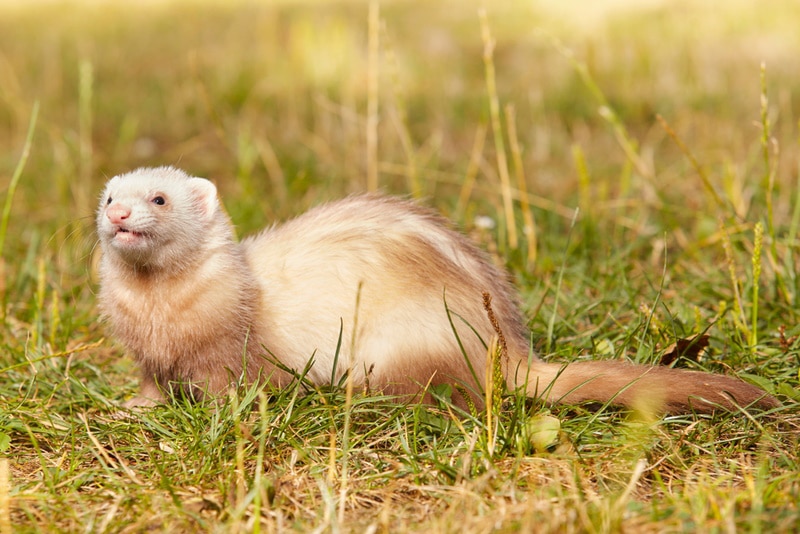
Origin
Three types of ferrets exist in the world. The black-footed ferret encompasses the plains of the United States. While these ferrets used to range all the way from Mexico to Canada, they have significantly declined in population.
Other ferrets include European polecats and Siberian polecats. Despite their name, these are ferrets as well. The modern-day ferret in the homes of many enthusiasts worldwide originated from the European polecat.
Temperament
Black-footed ferrets are solo creatures that are voracious hunters. They are very territorial and vicious to other animals. It might stun you just how different the black-footed ferret is from its domesticated variant.
Domestic ferrets might have a few behavioral problems like biting or soiling outside of the litter box, but they are super friendly, highly energetic, and fun play companions that make wonderful pets.
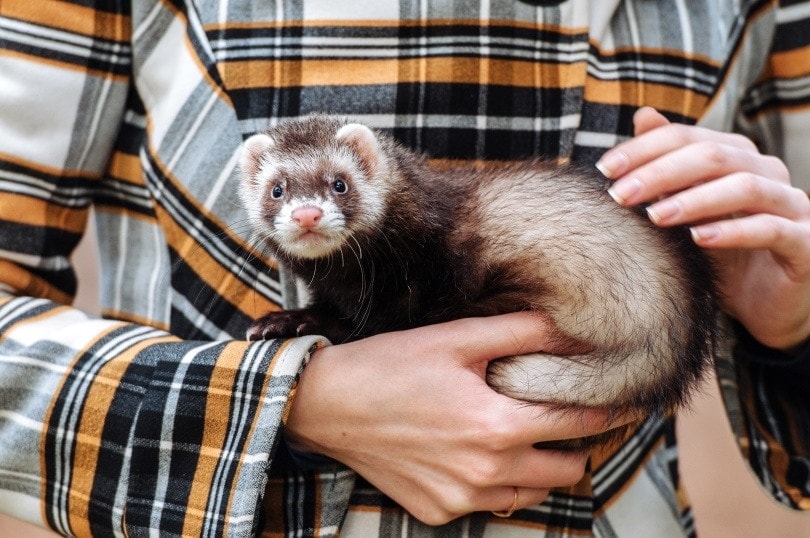
Diet
Ferrets have different diets depending on where they live, but all are carnivorous. Black-footed ferrets feast on prairie dogs 90% of the time. They will also eat other small rodents.
European polecats eat rodents, birds, amphibians, and reptiles. Gruesomely, European polecats sometimes cripple their prey by piercing their brain, stowing it away while living until they need to eat it.
Most Siberian polecats are crepuscular, hunting a variety of foods including small rodents and ground squirrels. They also prefer burrowing rodents like pikas.
Domestic ferrets require a high-quality commercial-grade food that is perfectly balanced to meet their nutritional needs.
Physical Characteristics
Domesticated ferrets can vary in color from light cream to nearly black in color. They have slender bodies, although they can pack on weight quite quickly if they’re allowed to eat whatever they want.
Black-footed ferrets have long, slender bodies and tiny legs with light and dark brown markings on their body, resembling a raccoon-like mask.
European polecats look very similar to the domesticated ferrets we know today. They typically have a two-tone coat with dark brown guard hairs and buff underfur. They have white stripes across their face. Often, they’re described as having a bandit-like appearance.
The Siberian polecat, also known as the white or masked polecat, has a very light face with dark brown and beige bodies. All ferrets resemble each other greatly in overall body structure.

Domestic Possibilities
There are tons of domestic ferrets in the pet trade. Some places do not allow the sale of ferrets due to their behavioral problems and other factors. You can find ferrets in most states, while others require a permit only. Please check with your local laws before committing to this animal.
Keep in mind that domesticated ferrets differ greatly from their wild cousins. Often, black-footed ferrets, Siberian polecats, and European polecats require permits to stay under human care.
Breeding
In the wild, ferrets only get together during mating season. These critters will come together long enough to breed and then part ways. Mothers stay with their young until they reach the age of self-sufficiency.
Young ferrets are often very playful and social with one another. Once the hormones hit, that’s when the solitary nature takes over, and they begin life on their own.
A baby ferret is called a kit, usually only measuring between 2 and 2.5 inches long at birth. Most ferrets have a gestation period of 42 days and birth up to 8 kits, although it can be much more or less.
Ferrets are pretty independent at 6 weeks old, but they stay with their mother to learn survival and hunting skills. They generally stay with their mother between 10 and 12 weeks.

Suitable For:
Ferrets are suitable for any ferret-loving household, permitting that it is legal to own one in your area. Most states allow domestic ferrets in the pet trade, including offering them at popular pet shops. Remember that black-footed ferrets and European and Siberian polecats often require a permit to own, and are usually only under human care by wildlife professionals.
Which One Is Right for You?
So, what do you think about the differences? If you love these creatures’ overall look and personality, you’ll be happy to know that you can own a ferret in most places. However, many laws protect weasels and wild ferrets from domestication.
If you live in a state that does not allow ferrets or weasels as pets, you’ll unfortunately have to look for another suitable pet. However, if certain states require licensure or permits, you must jump through hoops to keep this exotic animal. Most states allow the traditional domestic ferrets as pets.
See also:
Featured Image Credit: Left – trondmyhre4, Pixabay | Right – ambquinn, Pixabay

